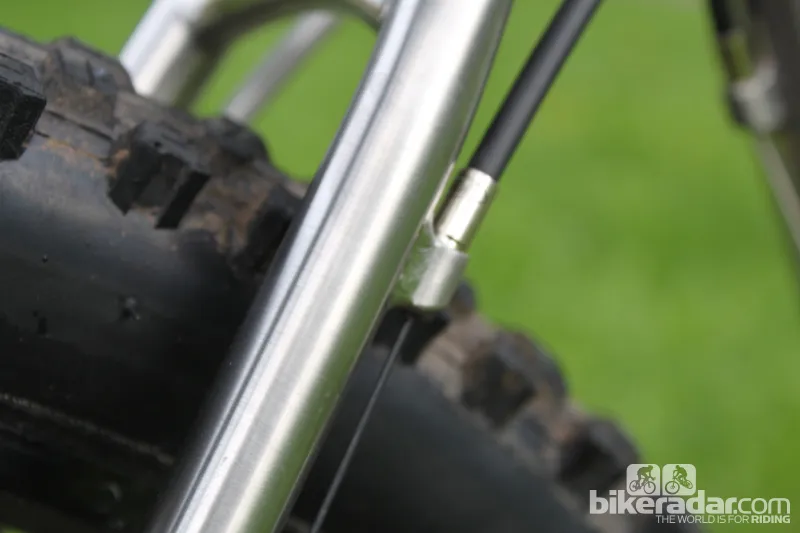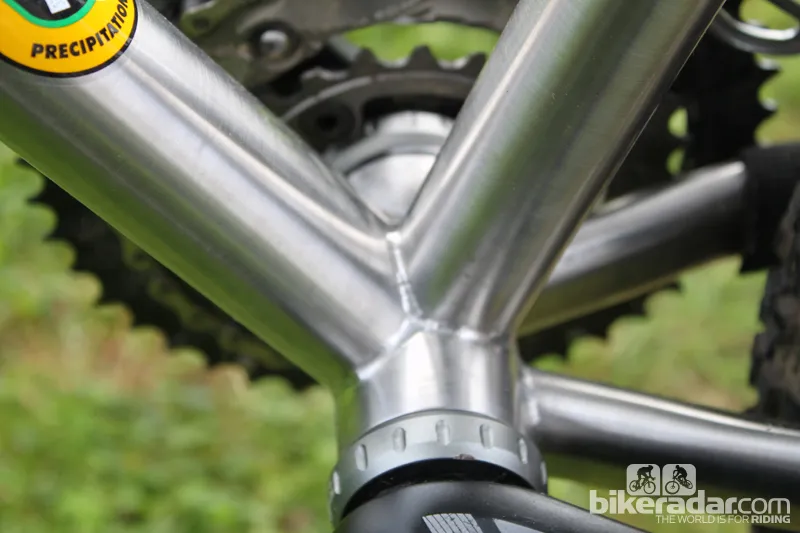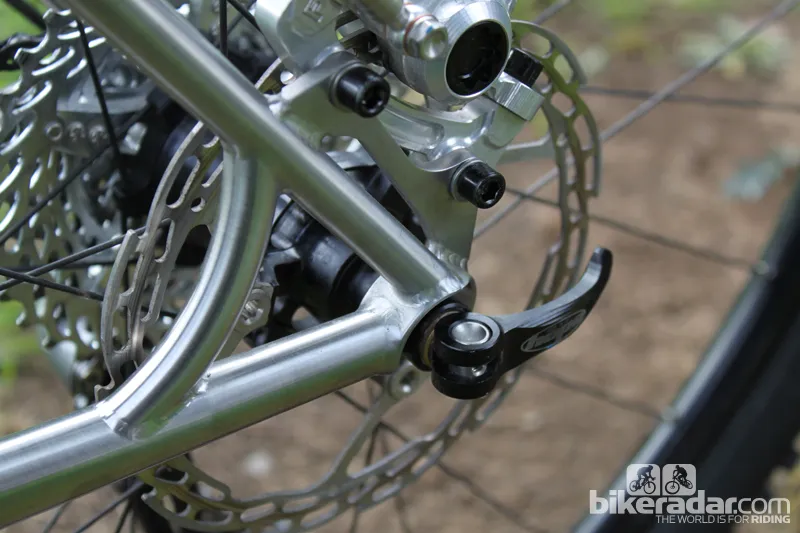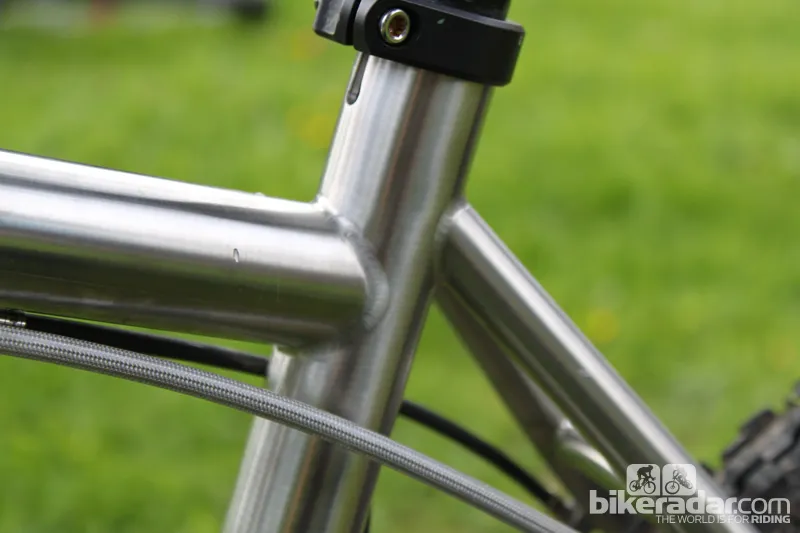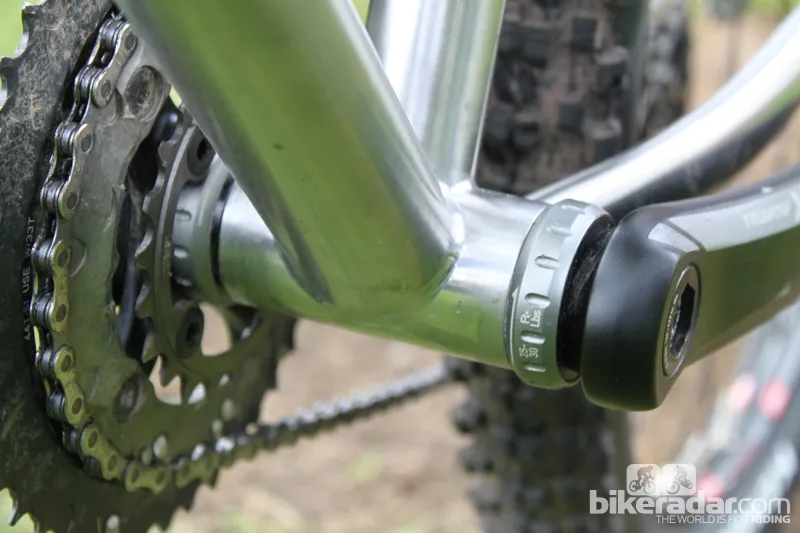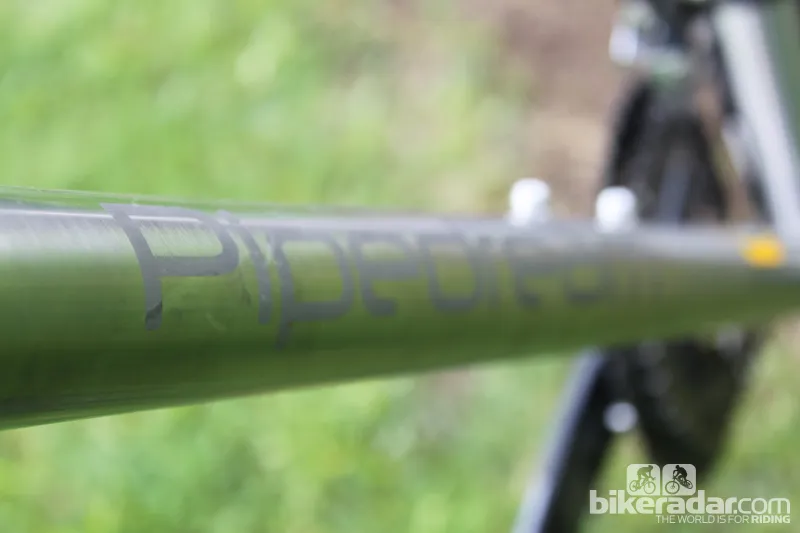Pipedream have been developing award-winning bikes in steel and titanium for almost 14 years, and we’ve just got an exclusive first look at the South Wales ’dreamers latest ferrous offering. Yes, you might be forgiven for assuming that this svelte-tubed hardtail is titanium but it’s all steel – stainless steel, in fact.
The Skyline R931 shares geometry with the Sirius R853 and lends itself to a range of different spec – the late prototype model we have is in light trail guise. It has a steepish 69-degree head angle and a classic 72-degree seat tube angle with a dependable, if old skool aesthetically straight head tube. The headset is external while the 73mm BB shell sits at 12.5in. It’s pretty light too, at 23.1lbs (10.71kg) for this build.
As you may have guessed from the name, the Skyline R931 is constructed using Reynolds new-ish 931 stainless steel. That’s a slightly different blend to the Reynolds 953 tubing that custom builders have been using for a number of years. Reynolds 931 uses a different heat treatment cycle to 953 which results in a subtle difference in tube strength and a thus a subtly cheaper price tag.
Our bike was dressed up in a light trail and XC kit, but as it’s sold as a frame only, you can build it up as you please. You could either run it as a lightweight XC racer or take full advantage of the 120mm travel fork capabilities and spec it up as a lightweight mid travel trail assassin. And big wheel fans needn’t worry, because Pipedream have got an all new 29er in the works too.
The Skyline R931 is currently available at the same price as Pipedream’s ti offering (Sirius Titanium) – £1,195 – as stainless steel is as tricky to weld and manufacture frames from as with titanium. You can read more about the frame, and Pipedream’s other offerings at Pipedream Cycles.

Our Skyline R931 test bike
But why steel?
Lovers of steel like to pipe on about how its super smooth riding qualities are all about the material, and while that’s true to an extent, claiming that one material will provide a certain ride is somewhat misleading. Materials’ inherent properties affect tube sizing and shaping which can massively affect the feel of the bike.
Steel was one of the first materials that mountain bikes were made from. It’s an alloy – mostly iron, but with some chromium and carbon. Different amounts of these and other elements radically change the alloy’s properties, but here we’re generally talking about 4130 Cromoly steel, which is easy to weld and to build into a relativity light, tough frame set.
Steel is stiff and tough compared with aluminium alloys, but a good steel frame will be smooth and zingy out on the trail thanks to the smaller diameter tubes that are used. The smaller tubes can flex more than large diameter ones. Due to steel’s higher density you can’t just upsize the tubing to boost stiffness, as the resulting stiffer steel frame would be too heavy. The final drawback to steel as a frame material is that it can eventually corrode.
Aluminium alloy’s inherent material properties are that it’s not as stiff as steel but it has a much lower density so you can use more of it in a frame for a given weight. It’s also highly corrosion resistant. Frame builders can use the lower density to create much bigger tube diameters, which massively boost stiffness so it can be stiffer and lighter than steel all while being less susceptible to corrosion.
Titanium has been around for long while, but good titanium frames not so much. Litespeed were some of the first mountain bike frames available, and while we call them titanium they are another alloy mostly consisting of titanium with a few other trace metals and elements added. Ti’s properties are much like steel, but is less dense so you could boost frame stiffness without a weight penalty or have a similar ride to steel at a much lower weight. It’s also very corrosion resistant – so much so that it’s one of the few alloys that can be put inside the human body. Think new hips and plate strengthening around broken bones.
Most ti frames could be in the sea for a year or two and not be worse for wear, but steel frames can't handle this. Stainless steel, on the other hand, can. Reynolds 931 stainless steel may well become the material of choice for lovers of steel and handmade bicycle frames.
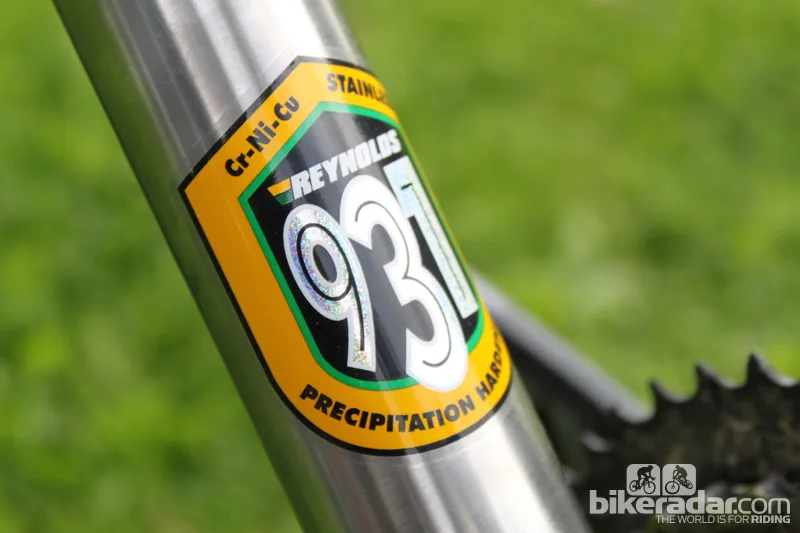
Reynolds 931 - stainless steel



